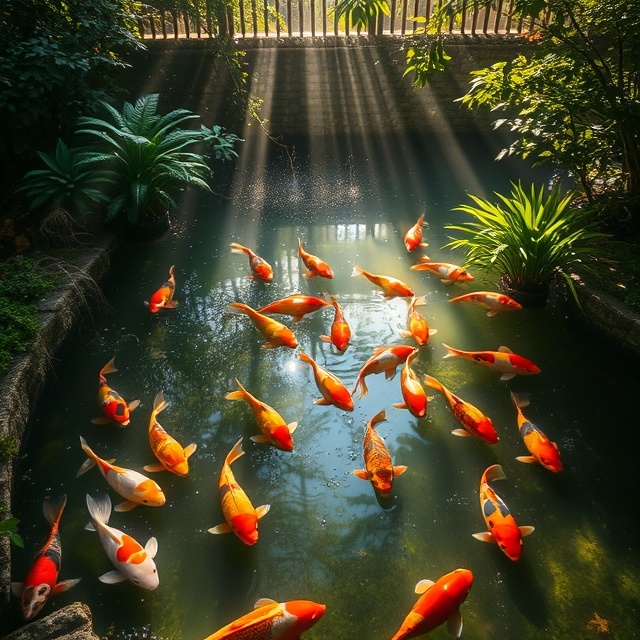Koi fish are not just beautiful to look at, but they also require careful attention and maintenance to thrive in their aquatic environment. Proper care involves several key factors, including water quality, diet, pond conditions, and general health management. By following the right guidelines, Koi owners can ensure that their fish remain healthy, vibrant, and long-lived.
One of the most important aspects of Koi care is maintaining the water quality in their pond. Koi fish are highly sensitive to water conditions, and poor water quality can lead to diseases, stunted growth, or even death. The water should be kept clean and free from harmful chemicals. Regular water changes are necessary to remove excess waste and ensure a balanced environment. Water testing kits can help monitor the levels of ammonia, nitrites, and nitrates, which should be kept at safe levels. Additionally, it is crucial to keep the pH level between 7.0 and 8.0, as extreme pH fluctuations can stress the fish.
Filtration systems play a vital role in keeping the pond water clean. A good filtration system removes debris, waste, and harmful toxins, helping to maintain a stable and healthy environment. Mechanical filters remove larger particles, while biological filters promote beneficial bacteria that break down organic matter. UV clarifiers can also be used to eliminate algae and improve water clarity, allowing the vibrant colors of the Koi to shine through.
Temperature is another key factor in Koi fish care. Koi are cold-blooded, and their body temperature depends on the surrounding water. The ideal temperature range for Koi is between 65°F and 75°F (18°C – 24°C). In colder climates, Koi may need to be protected during the winter months to prevent the pond from freezing. Some Koi owners use pond heaters or insulation to keep the water temperature stable and ensure the fish remain active and healthy.
Feeding is an essential part of Koi care, and a well-balanced diet is necessary to maintain their health and enhance their color. Koi are omnivores and require both plant and animal-based foods. High-quality Koi pellets, which are specially formulated for their nutritional needs, should form the bulk of their diet. These pellets contain the right balance of protein, vitamins, and minerals. During the warmer months, when Koi are more active, they should be fed two to three times a day. However, during the winter, when the fish’s metabolism slows down, feeding should be reduced or stopped altogether.
Proper pond design is also crucial for Koi care. A well-constructed pond should have plenty of space for the fish to swim and grow. Ideally, the pond should be at least 3 feet deep, allowing the fish to find shelter from predators and avoiding the risk of freezing during the winter. The pond should also include aquatic plants and hiding places, such as rocks or caves, where the Koi can take refuge if they feel threatened. A pond with good water circulation and oxygenation helps ensure that the Koi are well-fed and can breathe easily.
Koi health should be regularly monitored for signs of illness. Common health issues include skin ulcers, fungal infections, and parasites, which can be managed with proper treatment. Regular pond maintenance and the use of high-quality fish care products, such as water conditioners and medications, can help prevent these problems.
In conclusion, keeping Koi fish requires dedication and attention to detail. By maintaining clean water, providing a balanced diet, ensuring proper pond conditions, and monitoring the health of the fish, Koi owners can enjoy the beauty and serenity that these magnificent creatures bring to their ponds for many years.

